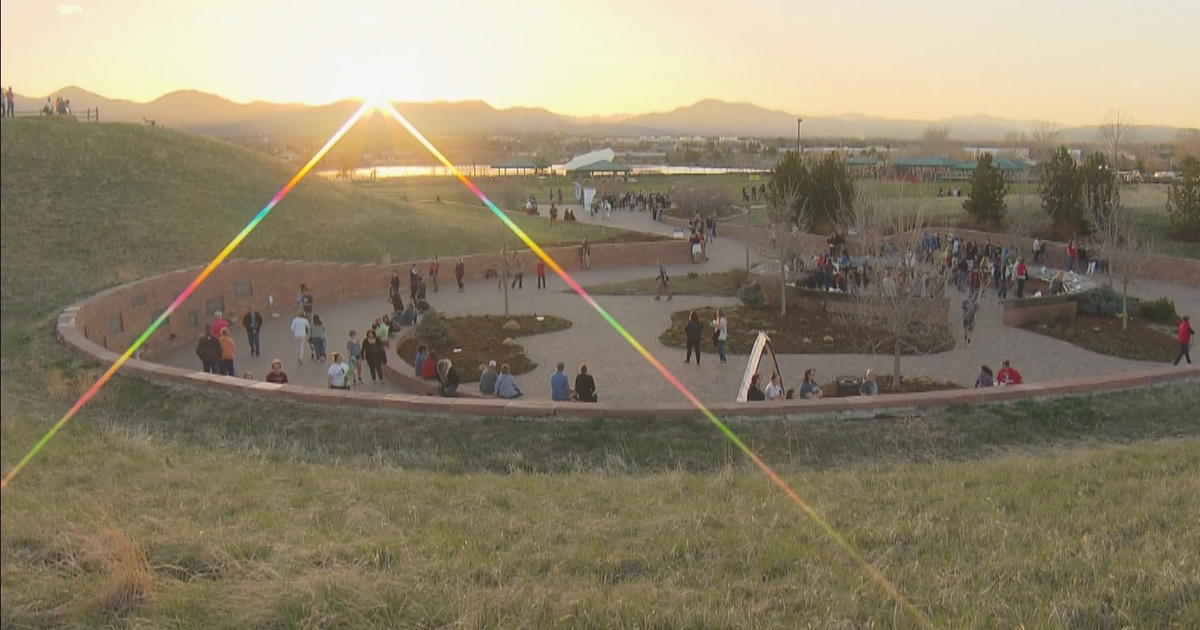Rare Dinosaur Found At Snowmass
SNOWMASS VILLAGE, Colo. (AP) — A dinosaur fossil discovered in rural Old Snowmass turned out to be a very rare beast, according to the paleontologist leading the excavation.
The bones are from a Haplocanthosaurus, a plant-eater that roamed the Earth in the Late Jurassic period, more than 150 million years ago, according to John Foster, curator of paleontology at the Museum of Western Colorado in Grand Junction.
"It's a pretty rare beast," he said. There are only about 10 Haplocanthosaurus known total, Foster said, so it is one of the most rare dinosaurs in the lower Morrison Formation, a unit of rock that is prolific with dinosaur fossils.
The discovery of the 150-million-year-old Haplocanthosaurus has been overshadowed by the incredible haul of bones from woolly mammoths and other prehistoric animals at Ziegler Reservoir in Snowmass Village. Foster said there is no significance to the discoveries coming only 6 miles apart. The mammoths are from about 10,000 years ago while the Haplocanthosaurus roamed the earth 150 million years ago.
Among the identifiable specimens from the Morrison, about 27 percent are the famed Brontosaurus, the lumbering giant with the tree-trunk legs and ridiculously long neck that every kid learns about in grade school. In contrast, the Haplocanthosaurus accounts for only 2 percent of the dinosaurs identified from the Morrison, Foster said.
One of the first one was discovered near Canon City, Colo. in the late 1800s and the dinosaur was named in 1903, according to Foster's research. They have only been discovered near Vernal, Utah; Colorado and Wyoming.
The bones were first discovered by Mike Gordon in 2005. Gordon, an Aspen High School graduate, was exploring the adjacent properties owned by his mom and stepfather, Jessica and Bennett Bramson, and his grandparents, when he discovered unusual bones. Gordon was a college student at Colorado State University at the time. He took bone samples to museum staff members and college educators and learned they were from a dinosaur.
The Bramsons contacted various museums about the bones in hopes of interesting them in a dig, but early suspicions were that the fossil was from a much more common dinosaur. They weren't interested.
At first, Foster thought they were looking at a meat-eating dinosaur, which excited him because carnivores are slightly less common than plant eaters. In one of their first digs, they pulled an 800-pound slab of rock wrapped in plaster and burlap down the hillside, removed the rock and pieced together tiny fragments of bone. It took 18 months of work to process that batch, Foster said. He compared it to working on a 3D jigsaw puzzle.
The Haplocanthosaurus is similar to the Brontosaurus, though on a much smaller scale. The Brontosaurus was roughly 70 feet long and 15 feet high at the back, Foster said, while Haplocanthosaurus was 35 to 40 feet long and up to eight feet at the top of the back. Both had the long necks with the small head. "Proportional-wise, it would have looked fairly similar," Foster said.
- By SCOTT CONDON, The Aspen Times
(© Copyright 2014 The Associated Press. All Rights Reserved. This material may not be published, broadcast, rewritten or redistributed.)



